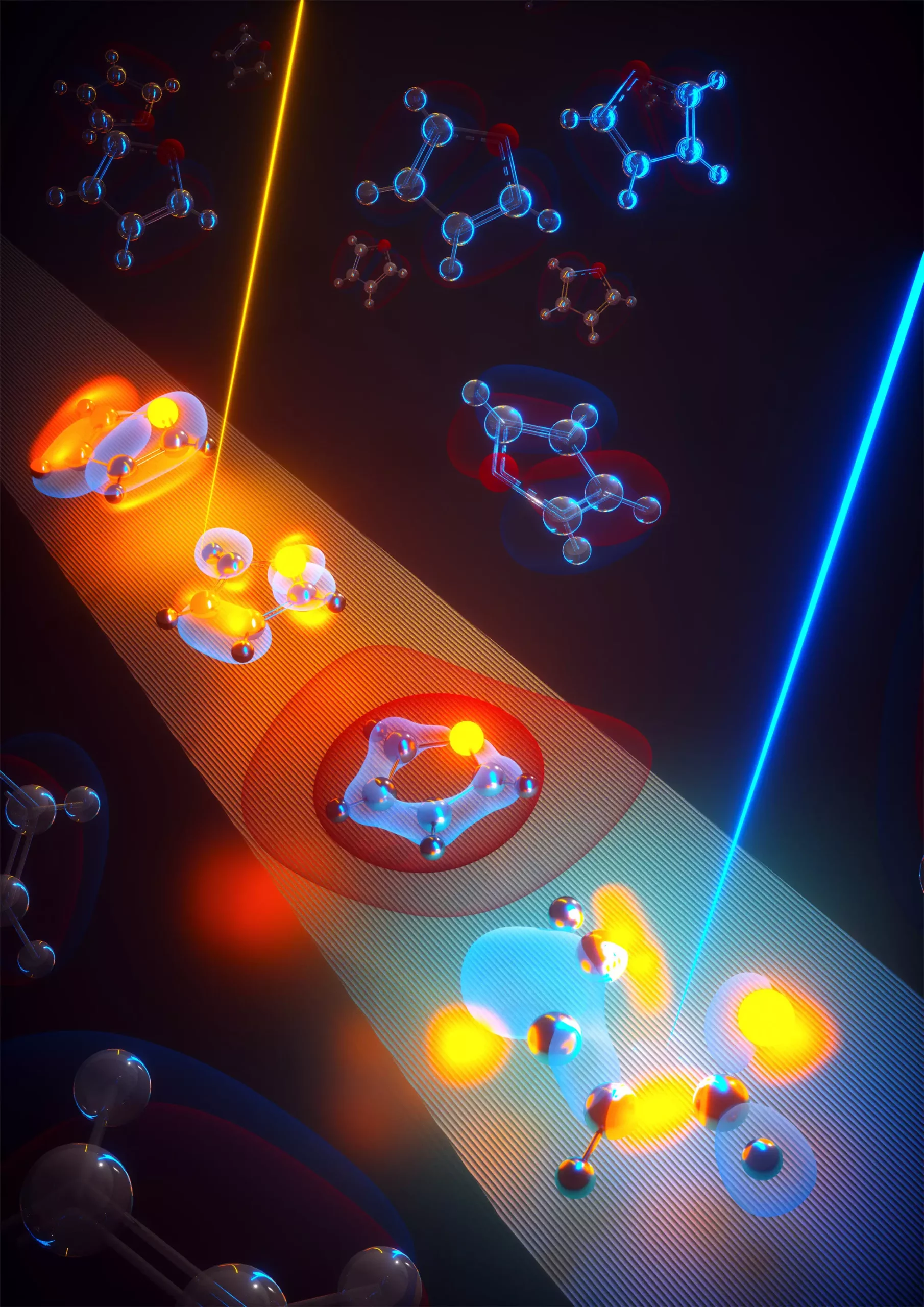Chemical reactions are intricate processes that involve dynamic interactions between electrons and the nucleus of atoms. Conical intersections are radiation-less relaxation processes that play a crucial role in biological and chemical functions. Detecting these dynamics experimentally is challenging due to the complexity of tracing both electronic and nuclear motion simultaneously. Physicists and chemists have been striving to capture molecular dynamical evolution in real-time, presenting a significant challenge in the field.
In a recent publication in Nature Photonics, ICFO researchers led by ICREA Prof. Jens Biegert introduced a powerful tool based on attosecond core-level spectroscopy to investigate molecular dynamics in real-time. This innovative approach overcomes the challenges associated with traditional methods of studying dynamic molecular processes. The team utilized this tool to study the evolution of gas-phase furan, a representative organic molecule with a cyclic structure, known as a chemical “ring.”
Furan served as an ideal model system for studying the dynamics of heterocyclic organic rings, which are prevalent in everyday products such as fuels, pharmaceuticals, and agrochemicals. By time-resolving the ring-opening dynamics of furan, the researchers were able to observe the fission of the bond between carbon and oxygen, leading to the breakdown of its cyclic structure. The identification of conical intersections played a crucial role in understanding the molecular evolution towards ring-opening.
The experimental setup involved using a pump pulse to excite the furan molecule followed by an attosecond probe to monitor the induced changes. By analyzing the absorption spectrum in relation to the delay between the pump and probe pulses, the researchers located the conical intersections and tracked the electronic state changes of furan. The observation of quantum beats and the detection of optically dark states highlighted the sensitivity and capability of the spectroscopic tool in revealing intricate molecular processes.
The transition from a closed to an open ring geometry of the molecule involved symmetry breaking, which was reflected in the absorption spectrum. The high temporal resolution and coherent energy spectrum of the attosecond core-level spectroscopy allowed for the precise identification of nuclear structure changes during the ring-opening process. The methodology provided a detailed insight into the electronic and nuclear coherences, symmetry changes, and quantum beats associated with the relaxation process.
The innovative approach of attosecond core-level spectroscopy extends beyond the study of furan to other molecular species, showcasing its potential in unraveling complex dynamics in relevant biological and chemical functions. By enabling the observation of molecular reactions and energy relaxation dynamics in real-time, this technique holds promise in advancing various applications, such as understanding the photoprotection mechanism of DNA bases. The manipulation of molecular reactions and energy dynamics represents a significant area for future research and applications based on the findings of this study.


Leave a Reply